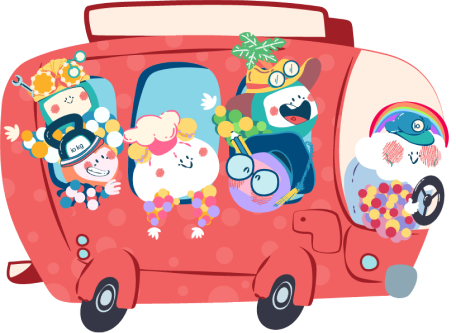Kangaroos are pretty popular with kids. However, there’s not much known about these magnificent creatures apart from what we hear in nursery rhymes or observe from them in zoos (unless you’re from Australia and close encounters with them are a regular thing for you).
If you want to know more about Australia’s most famous marsupial, then here are some fun facts about kangaroos that are perfect for you.
The term “Kangaroo” can be misleading
First, the name “kangaroo” comes from the Aboriginal word “gangurru”— a name the Guuga Yimithirr people used to refer to the Eastern Grey kangaroo.
Now though, the term kangaroo is loosely used to refer to the genus Macropus (meaning large-foot) which includes the four largest—Red, Eastern Grey, Western Grey, and the Antilopine kangaroos. Some would even expand the term by including the tree kangaroos, wallaroos, wallabies, pademelons, quokkas, and even the tiny rat kangaroos.
So, if you use the term “kangaroos,” you better ensure you know which specific species you’re talking about.
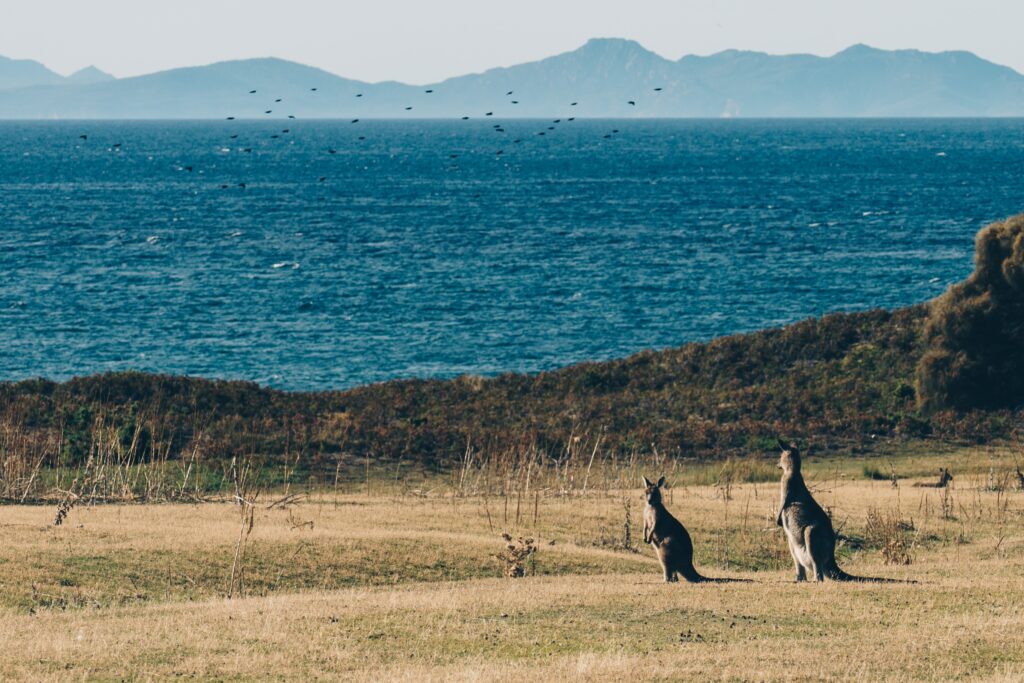
Courtesy of Fidel Fernando
Kangaroos are incredibly athletic
Kangaroos are physically well-built. They have two large and very strong hind legs, two short but muscular forelimbs, and an imposingly powerful tail. Some individuals are also very tall, standing over two meters high.
Others can leap as high as 6 feet off the ground and more than 8 meters in a single bound. Some travel comfortably at 20-26 kilometers per hour, then sprint at 71 kilometers per hour over short distances. Some can easily climb trees, and some even swim.
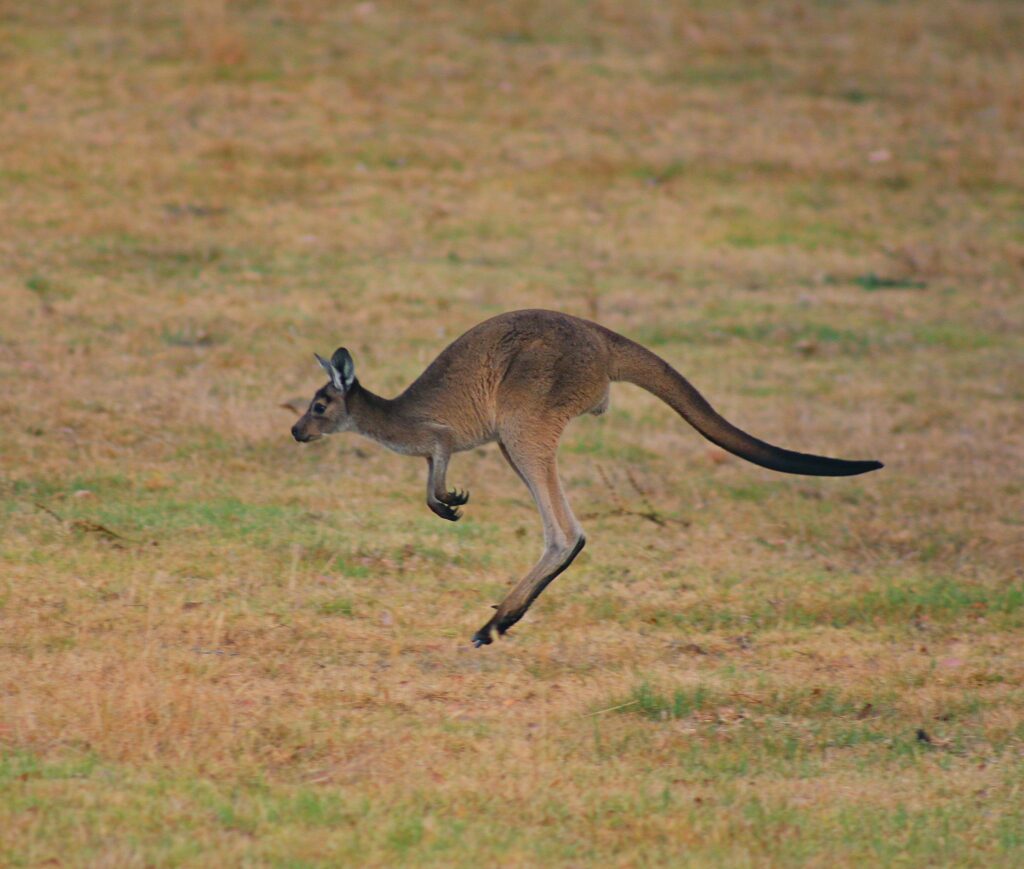
Kangaroo tail is like an extra leg or foot
Unlike monkeys who use their tails to grab onto stuff, kangaroos use their tails like a walking stick or an extra leg. Their tails, which can be as thick or even thicker than their legs, are muscular enough to prop them up or alternate with their feet in supporting their whole weight as the animal slowly moves from one place to another.
Sometimes, the tail alone can be enough to keep them upright. When fights break out, you can see their balance on their tails and then repeatedly try to kick each other to submission.
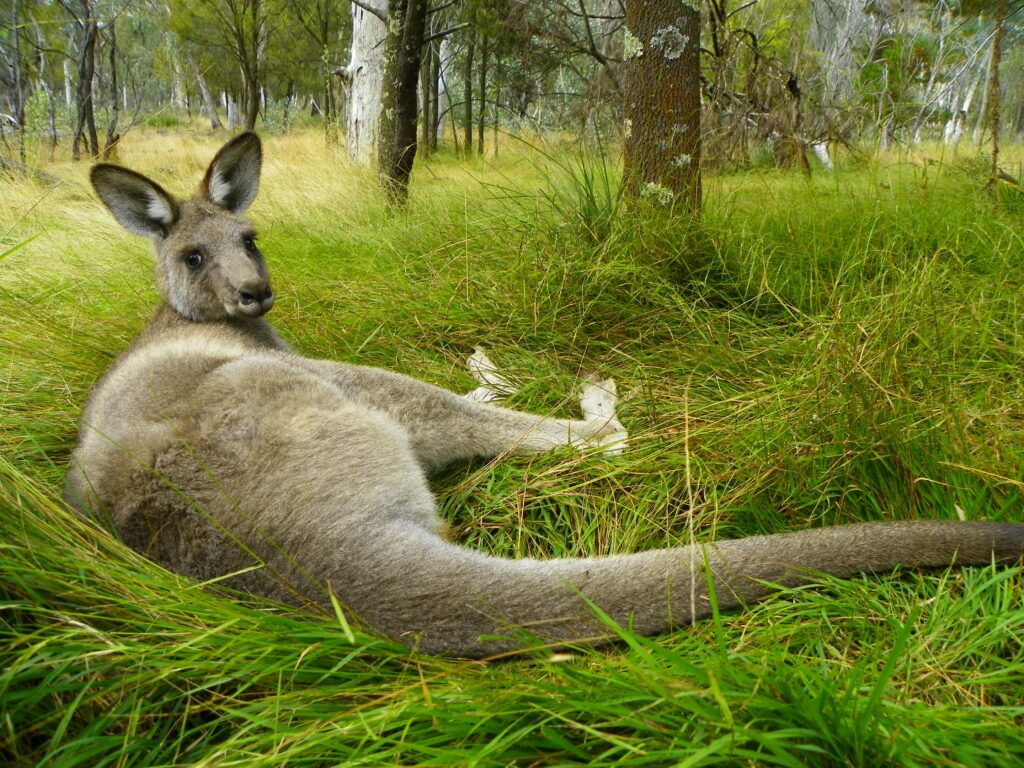
Kangaroos come in many names
Male kangaroos can be referred to as bucks, boomers, or jacks, while the females are usually called does, flyers, or even jills. On the other hand, baby kangaroos are called joeys regardless of gender.
Groups of kangaroos are also known as mobs, herds, or even troops. Seeing several mobs in one area without any disputes is normal. After all, kangaroos are not territorial in the way that most pack animals are. However, during mating season, it becomes a different story.
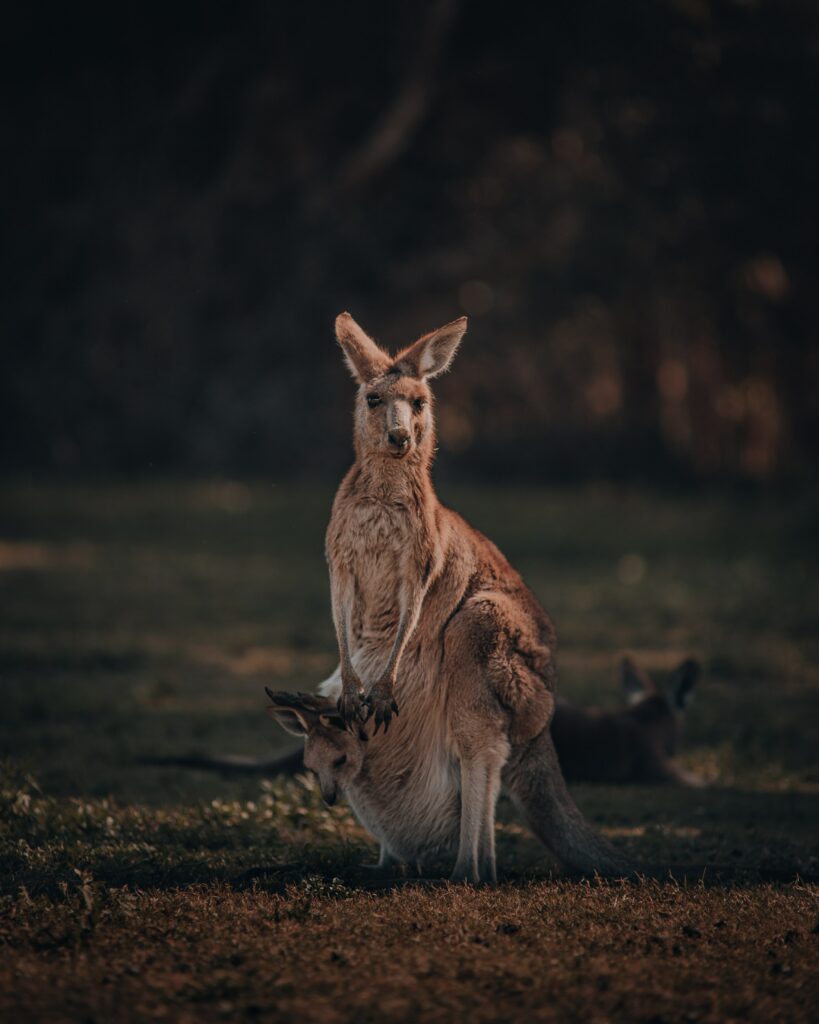
Courtesy of Manny Moreno
Kangaroos don’t have a lot of natural predators now, but that did not use to be the case
Except for humans and dingoes, kangaroos don’t have a lot of natural enemies that can pose a threat to them. With their massive size, impressive physiques, and athletic abilities, it’s almost impossible for any animal to take them down, currently at least. According to researchers, though, that wasn’t the case before.
Records show that kangaroo populations before were kept in check by their two natural predators—the Tasmanian tigers (that went extinct in 1982) and the Marsupial lions (that went extinct 46,000 years ago).
However, now that these animals are gone, kangaroo populations are rising, and conflicts between them and their closest human neighbors (usually farmers) are becoming more frequent.
To answer this problem, the Australian government has permitted qualified license holders to cull or shoot kangaroos – a controversial conservation effort that seeks to control their numbers in the wild humanely.
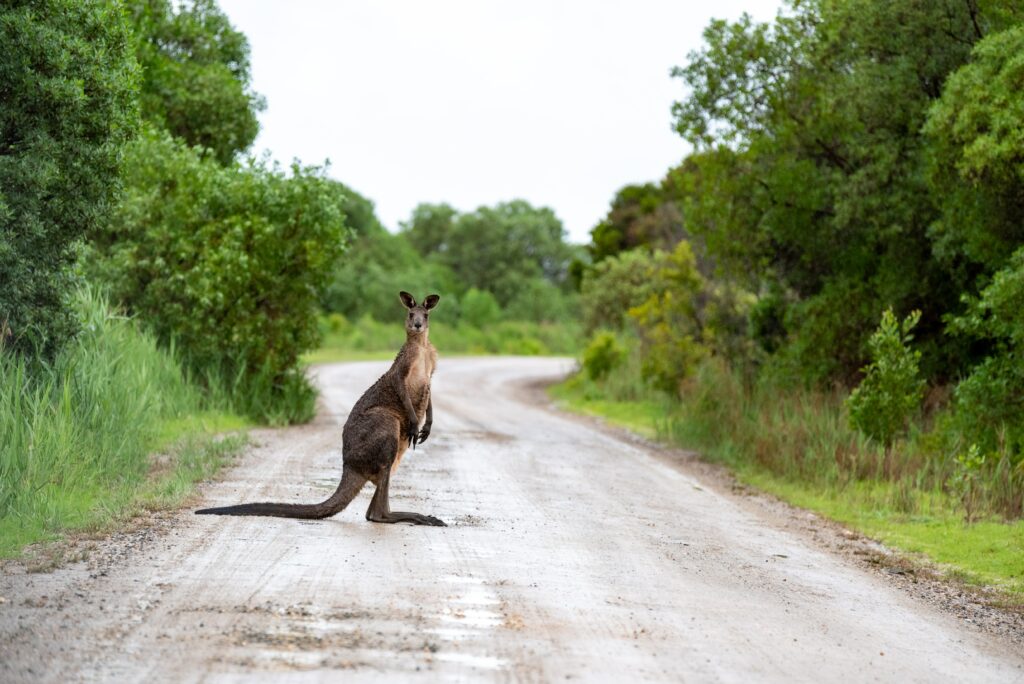
Courtesy of Graham Holtshausen
Kangaroos have evolved unusual escape tactics
When cornered or being chased by perceived threats, kangaroos employ strange but unique tactics to evade capture and death—tactics that had probably evolved from the time when the Tasmanian tigers and Marsupial lions were still around:
- They head towards the water and swim to deeper waters (since they are capable swimmers). When the animals chasing them seem to struggle, they face their pursuers, prop themselves up using their powerful tails, then try to drown them.
- Some kangaroos would “accidentally” drop their joeys, probably as a sacrifice, to buy time and get away.
- When joeys are being chased, they will find their moms and jump headfirst into their mom’s pouch for protection.
- When forced to a corner, kangaroos will fight back and try to inflict severe physical damage on their pursuers before running away. With powerful hind legs that can deliver up to 759 pounds of force per kick, a punching power of 275 pounds, and a bite force of 925 pounds (rivaling even a Grizzly’s), they are a severe threat to any would-be predator that would carelessly come too close.
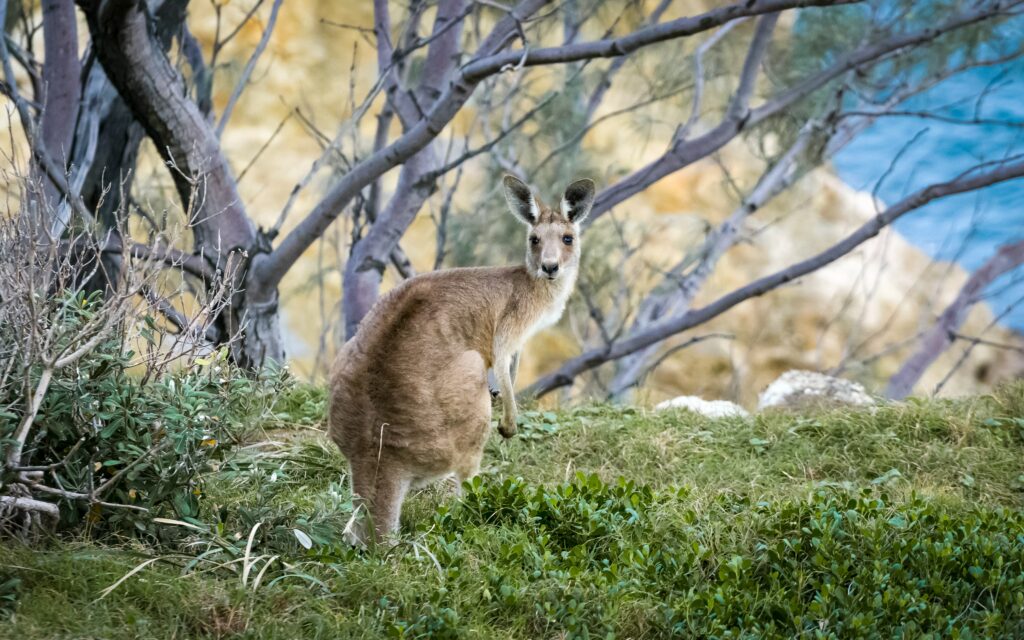
For Your Child’s Kangaroo Fascination
Kangaroos can’t be kept as pets, so if you want to support your child’s love for these magnificent creatures, consider the following recommendations:
- Jirra Kangaroo by GUND Store
- Explore My World: Kangaroo by Jills Esbaum
- Kangaroo Onsie by GONAAP
Frequently Asked Questions about Kangaroos
Are kangaroos friendly to humans?
Unlike most other animals, kangaroos are not scared of humans. However, they still prefer to keep their distance from people. With enough encounters, though, and if they don’t perceive you as a threat, they will be able to tolerate your presence eventually.
Just don’t expect the same display of friendliness you get from dogs, cats, or other household pets from these wild creatures.
Do kangaroos attack humans?
Kangaroo attacks on humans are rare but, unfortunately, not unheard of. You can even find a few videos of such incidents online. Generally, kangaroos prefer to stay clear of humans or their settlements.
Unfortunately, they eat the same thing that farm animals do. Conflicts usually arise when kangaroos compete with farm animals for grazing areas and food and sometimes when they attack pet dogs.
Can kangaroo meat be eaten?
Yes, it can be eaten. It has been a staple protein source for indigenous Australians for a very long time.
Kangaroo meat is even viewed by some people as a healthier option compared to beef since it has less fat and higher protein content, and it even contains Omega-3 fatty acids (which are usually found in seafood). Currently, kangaroo meat is considered an essential part of modern Australian cuisine.



